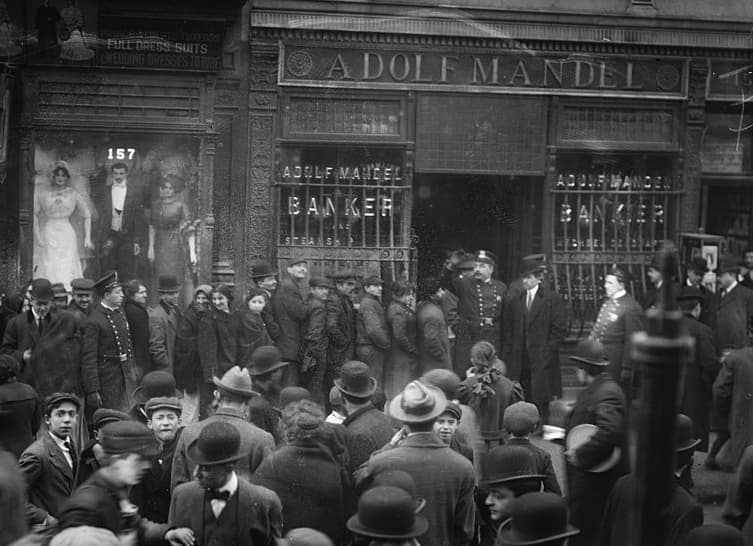The Economic Crossroads
The recent bank runs remind that the first step to straightening out America’s economic affairs is to restore the convertibility of the dollar — that is, a return to honest money.

The current banking crisis has reached a point at which we’re inclined, yet again, to relate what happened in 1952. We’ve written about this before, but it’s rarely felt so relevant. For 1952 was the last time the Republican platform called for the convertibility of the dollar and gold. General Eisenhower stood for the presidency on that platform and won. Upon which, a debate erupted in and around the new administration in respect of what to do.
One camp, it can be said, was represented by Dow Jones’ financial weekly, Barron’s. It argued that before America could restore convertibility of the dollar, it would have to stabilize its economy, balance its budget, and block political interference with the Federal Reserve. The other camp, represented by Dow Jones’ Wall Street Journal, argued that for America to be able to stabilize its economy, it first had to restore convertibility of the dollar.
The reason we mention this is because of the settlings that have just been issued by the Times in the form of an editorial. It is taking the position that Americans “have every right to be furious” that the “government is bailing out” the banks, though protecting uninsured depositors “is the best choice available.” Yet the Times urges steps to “make this the last banking bailout” — via, as you’d imagine, more regulation.
The Times’ analysis of today’s banking debacle, with its avowed faith in “government aid and prudent regulation,” isn’t far off from the spirit of Barron’s in 1952. It’s nibbling around on the margins of the problem instead of getting to the heart of the matter. For then as now, the first step to straightening out America’s economic affairs is to restore the convertibility of the dollar — that is to say, a return to honest money.
After all, what triggered today’s banking crisis are the manipulations that have put the Fed — and private banks — in a fiscal hole. Feature the Fed’s innovations, like racking up trillions in assets under Quantitative Easing and holding interest rates artificially below market rates for years in an effort to stimulate the economy. The abandonment of the gold-exchange standard is what opened the door to such monetary experimentation.
Absent the discipline of a currency convertible into specie, economist Judy Shelton has written, “central banks can create money with no questions asked.” That lets them “manipulate the cost of capital, or counteract movements in financial markets,” she said. It’s no wonder that the PhDs of the Fed, and other central bankers, have an inflated sense of their powers. Until reality breaks through in a crisis.
Under the post war Bretton Woods gold-exchange standard, America and the world saw a period of high growth — and stability. “Between 1945 and 1971, there were hardly any global banking crises,” a former Commerce Department official, Jeffrey Garten, has written. Removing the gold link, as President Nixon did in 1971, opened the door to banking instability, “from the Latin American debt explosion of the late 1970s to the market crash of 2007-08.”
Now, the bank failures of 2023. Under the fiat dollar, says Mr. Garten, new “instruments arose to hedge the risks” of exchange rate gyrations. “Options, swaps and derivatives grew into a vast casino-like industry.” The towering monetary historian Edwin Vieira, Jr. traces the banking crisis to the end of the gold standard. Dollar convertibility required banks to keep sufficient reserves of “real wealth on hand,” Mr. Vieira says.
This served as a “stabilizing system,” Mr. Vieira tells us. Contrast that with institutions like Silicon Valley Bank backing up their loans and deposits with “assets” like Treasury bonds. That means the banks — right up to the Fed — are “generating currency out of debt.” It aptly sums up the fiat money era. The bank runs, Mr. Vieira says, show “why we need to correct the underlying problem.”
________
Correction: The Commerce Department was where Jeffrey Garten served as Under Secretary of the International Trade Administration. The department was misstated in the bulldog.

